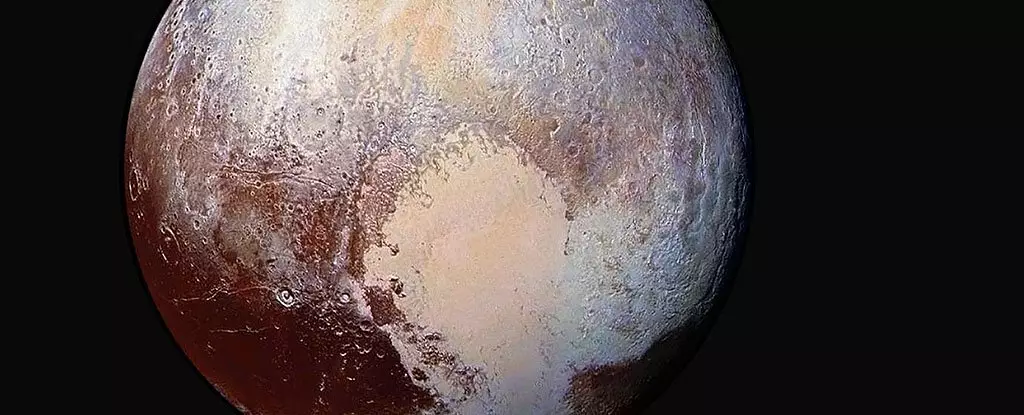Pluto, the distant dwarf planet in our solar system, is home to a striking feature known as the “heart,” a bright valentine-shaped region called Tombaugh Regio. This unique formation has puzzled scientists for years, and the most likely scenario for its origin involves a dramatic collision with a planetary body over 400 miles wide.
A team of astronomers from the University of Bern in Switzerland and the University of Arizona has conducted research and published a study in Nature Astronomy unveiling their findings. Referred to as the “splat” scenario, this theory sheds light on how Pluto’s iconic heart may have been created.
Contrary to previous hypotheses suggesting the existence of a deep subsurface ocean on Pluto, the researchers propose a new explanation for the formation of the heart. This scenario opens up a realm of possibilities for rewriting the history of Pluto’s geological evolution, urging scientists to reconsider their understanding of this enigmatic world.
The study primarily focuses on the western half of the heart, a region called Sputnik Planitia. This teardrop-shaped area, approximately 1,000 miles wide, is significantly lower in elevation and composed mainly of nitrogen ice. Through a series of computer simulations, the researchers have unraveled the mysteries surrounding this impact site.
By running various simulations of the ancient impact, the researchers have identified the most plausible scenario involving a 400-mile-wide object composed of 15% rock. This object approached Pluto at a specific angle and velocity, resulting in a dramatic impact that shaped Sputnik Planitia into its current form.
The impact event that created Sputnik Planitia left a distinctive mark on Pluto’s surface, resulting in a bright, icy teardrop shape. Unlike typical impact craters, this formation features a rocky core at the tail of the teardrop, highlighting the unique nature of this ancient collision.
One of the key findings of the study is the dismissal of previous theories that relied on the presence of a deep subsurface ocean to explain the lack of drift in the impact region. This new research challenges the notion of Pluto possessing such an ocean, prompting a reassessment of existing beliefs about the dwarf planet.
As the scientists delve deeper into Pluto’s geological history, they are also exploring how their findings may apply to other objects in the Kuiper Belt. By continuing their modeling work, they hope to unravel more mysteries about the evolution of icy worlds in our solar system.
The discovery of how Pluto’s heart came to be sheds light on the dynamic history of this distant dwarf planet. Through innovative research and cutting-edge simulations, scientists are unraveling the mysteries of our solar system, one icy world at a time. As we journey further into the cosmos, the secrets of Pluto and its fellow icy bodies in the Kuiper Belt await discovery.


Leave a Reply